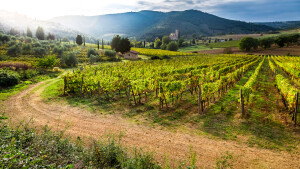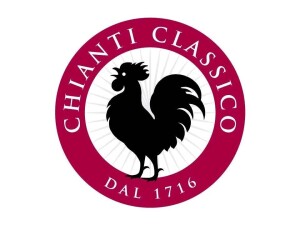 Heads up, wine students! The Chianti Classico Consortium has recently adopted some updates to the rules and regulation of their Gran Selezione sub-appellation. These changes were announced via publication in the Gazzetta Ufficale delle Republica Italiana on July 1, 2023. Some of these will be adopted right away, and some will not come into force until several years from now.
Heads up, wine students! The Chianti Classico Consortium has recently adopted some updates to the rules and regulation of their Gran Selezione sub-appellation. These changes were announced via publication in the Gazzetta Ufficale delle Republica Italiana on July 1, 2023. Some of these will be adopted right away, and some will not come into force until several years from now.
A bit of background: The Chianti Classico Gran Selezione category was adopted as an “upper tier” quality level for the wines of the Chianti Classico DOCG in 2014. The designation currently carries with it slightly higher production standards (in terms of minimum alcohol levels and aging) than the wines of the Chianti Classico DOCG and the Chianti Classico Riserva DOCG. In addition, the grapes must come from a an estate-owned vineyard.
The immediate changes—subzones: The 30-mile-/48-km-long Chianti Classico region has been sub-divided into a set of eight distinct (non-overlapping) subzones. These subzones—officially known as Unità Geografiche Aggiuntive or UGAs—are available only to Chianti Classico DOCG wines bearing the Gran Selezione designation. The use of UGAs for eligible wines will be allowed beginning with the wines of the 2022 vintage, scheduled to be released in 2025 (at the earliest).
- The UGAs are—for the most part—drawn according to the boundaries of the political areas (communes) found within the appellation’s borders.
- The communes of Castellina, Gaiole, and Radda—as well as the sections of the communes of San Casciano in Val di Pesa and Castelnuovo Berardenga that are within the boundaries of the DOCG—form five of the individual UGAs.
- Two communes—Barberino Tavarnelle and Poggibonsi, both of which are partially located within the Chianti Classico DOCG—have been combined to form the San Donato in Poggio UGA.
- Two UGAs have been carved out of the commune of Greve. The Panzano UGA comprises the frazione or hamlet of Panzano in Chianti; the remainder of the commune is a separate subzone known as the Greve UGA.
- Click here to view a map of the new UGAs, via the website of the Chianti Classico Consortium.
Changes for the future—modification of the required blend: The required blend for Chianti Classico Gran Selezione is currently the same as the blend required for all styles of Chianti Classico, namely, that the wine contain a minimum of 80% Sangiovese, The remaining 20% may comprise any grape (or grapes) from a long list of red grapes suitable for cultivation in Tuscany. However, with the wines of the 2027 vintage (due to be released in 2030), the rules change. The new regulations will require Chianti Classico Gran Selezione to contain a minimum of 90% Sangiovese; the remaining 10% (if not Sangiovese) must be a native Italian variety (or varieties). The list of allowed native Italian varieties includes Colorino, Canaiolo, Ciliegiolo, Mammolo, Pugnitello, Malvasia Nera, Foglia Tonda, and Sanforte (Maiolica).
- In addition, three more specific UGAs—Montefioralle, Lamole, and Vagliagli—are scheduled to be introduced along with the 2027 vintage.
Note: As with all such updates, this change will need to wind its way through EU authorization; however, as the government of Italy has granted their approval, the changes are considered to be in force. If the EU fails to approve the amendment, the regulations will be rescinded.
References/for more information:
- Gazzetta Ufficiale-July 1 2023-Updates to Chianti Classico DOCG (see page 17)
- Click here for more information, including a map of the new UGAs, via the website of the Chianti Classico Consortium.
Post authored by Jane A. Nickles…your blog administrator: jnickles@societyofwineeducators.org
